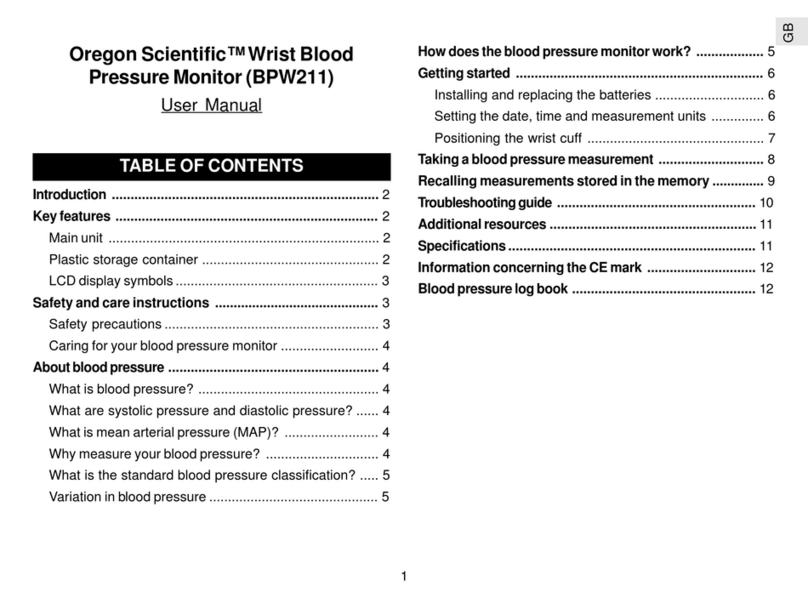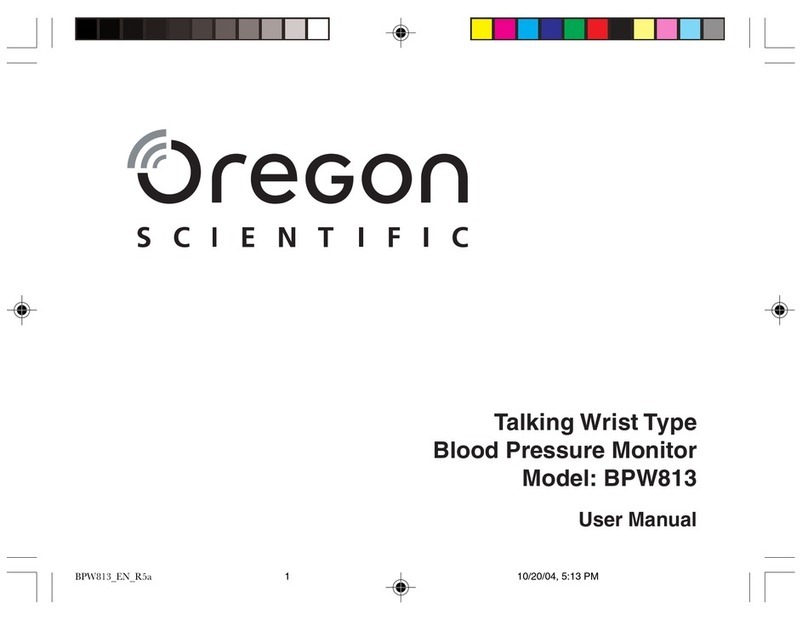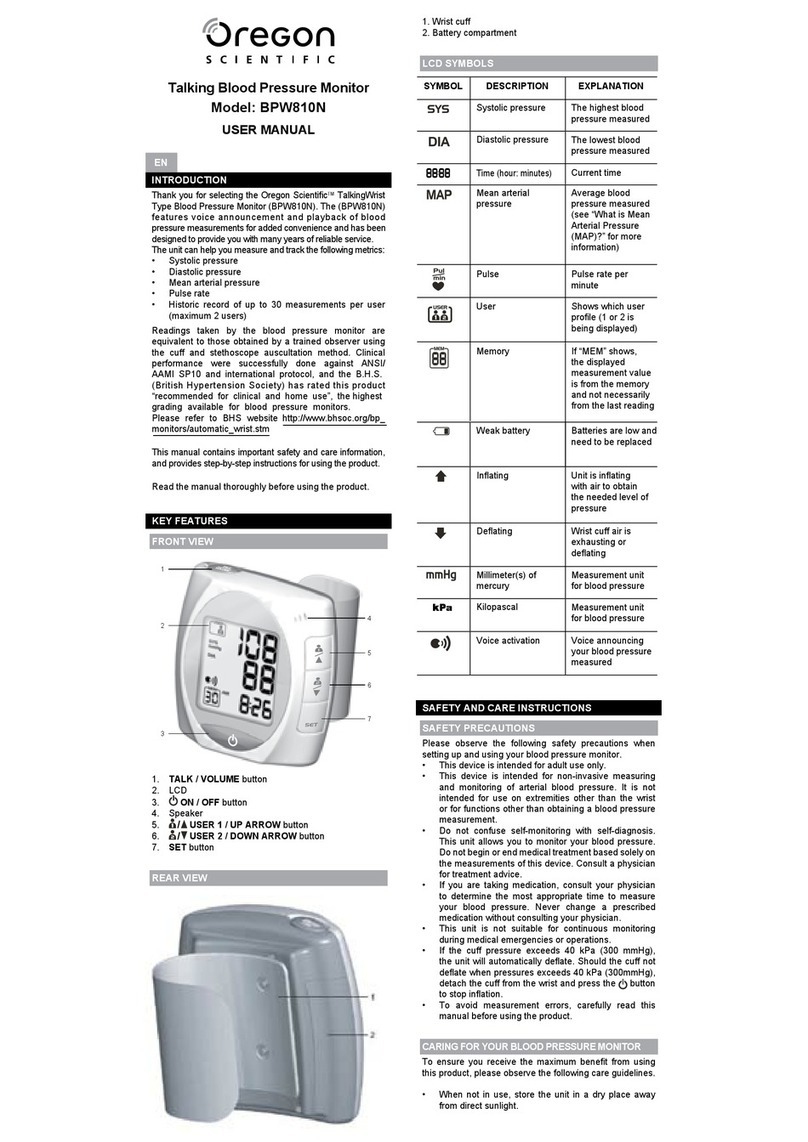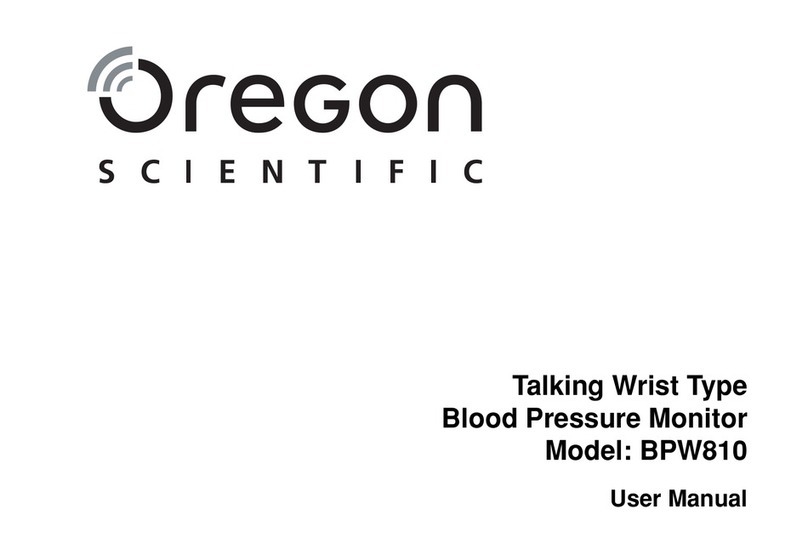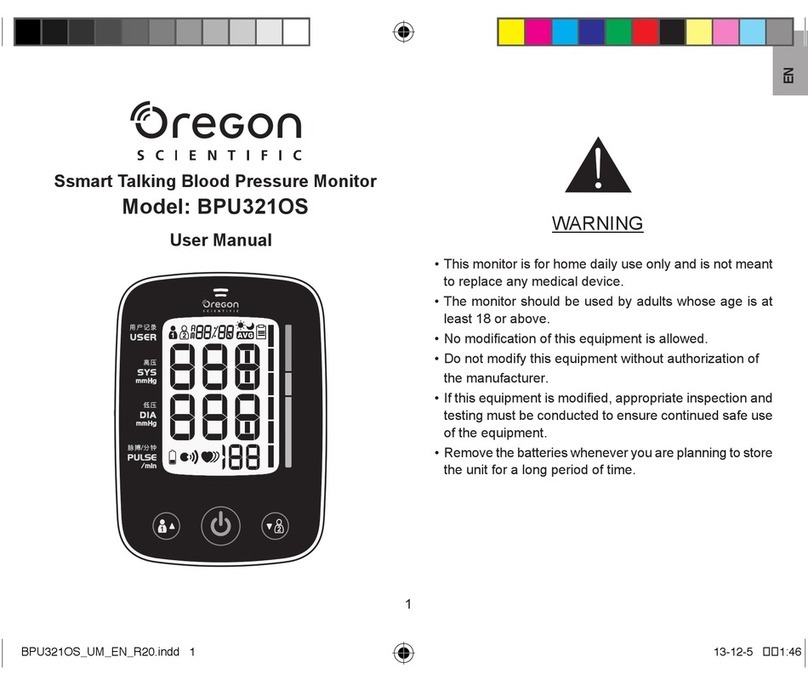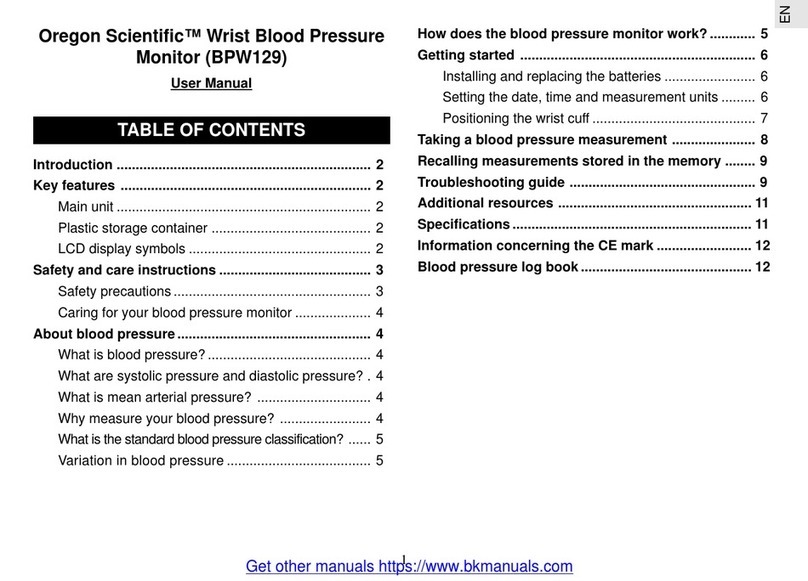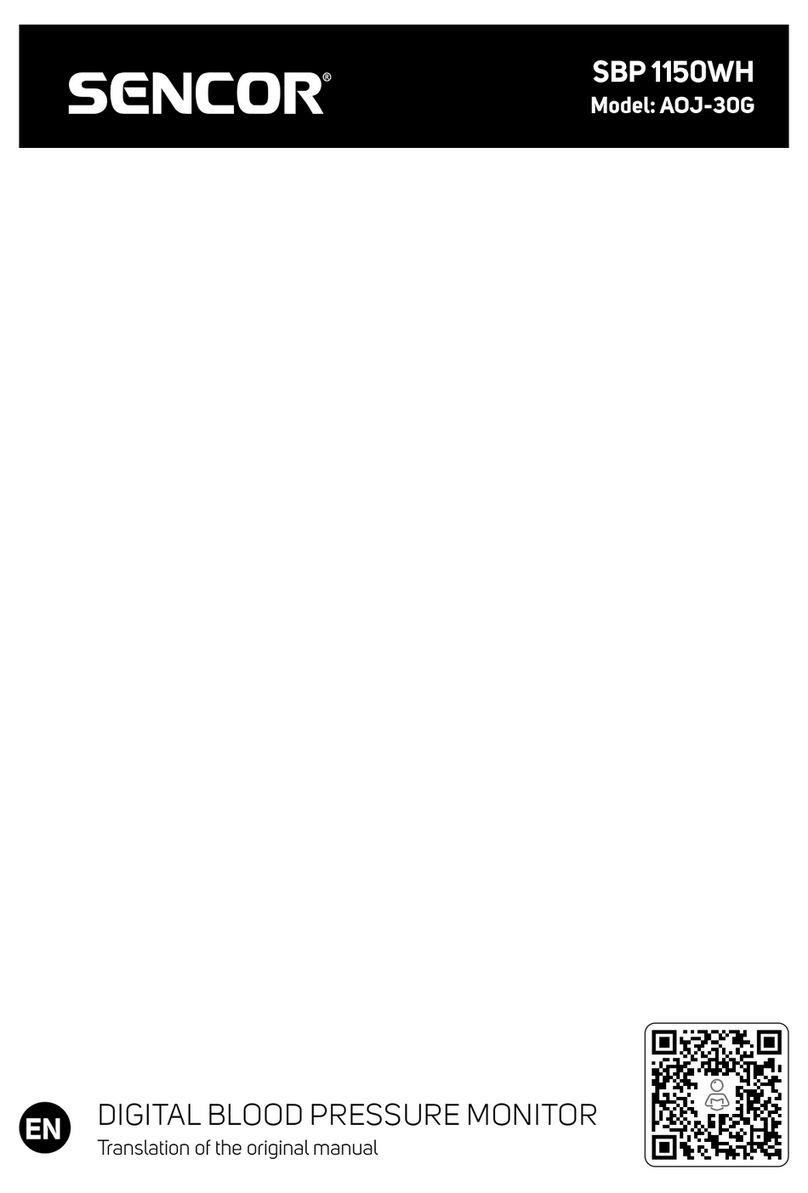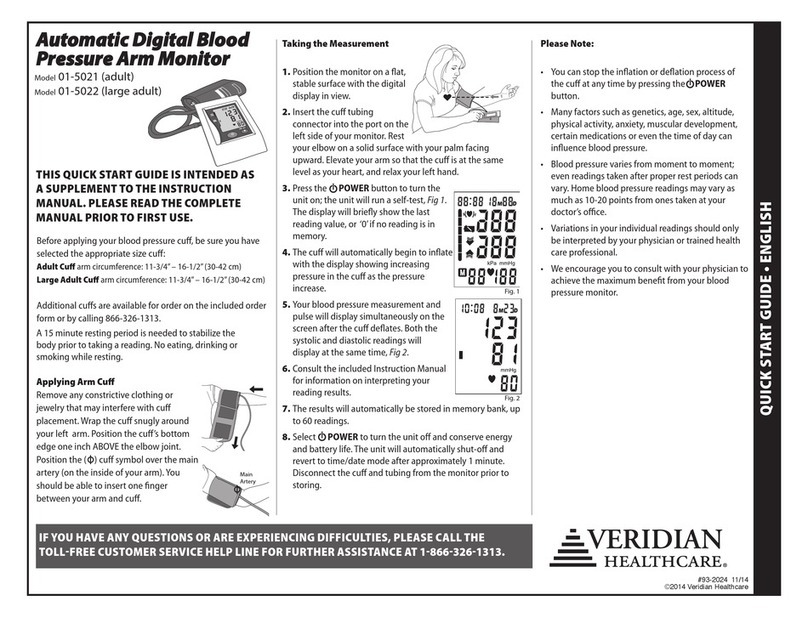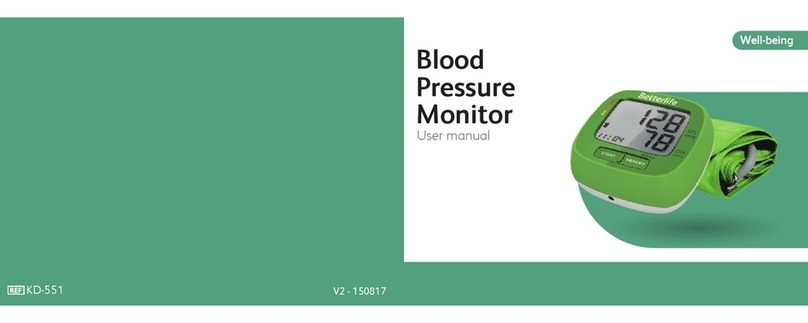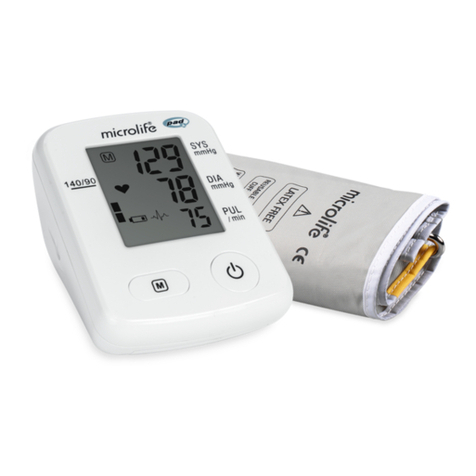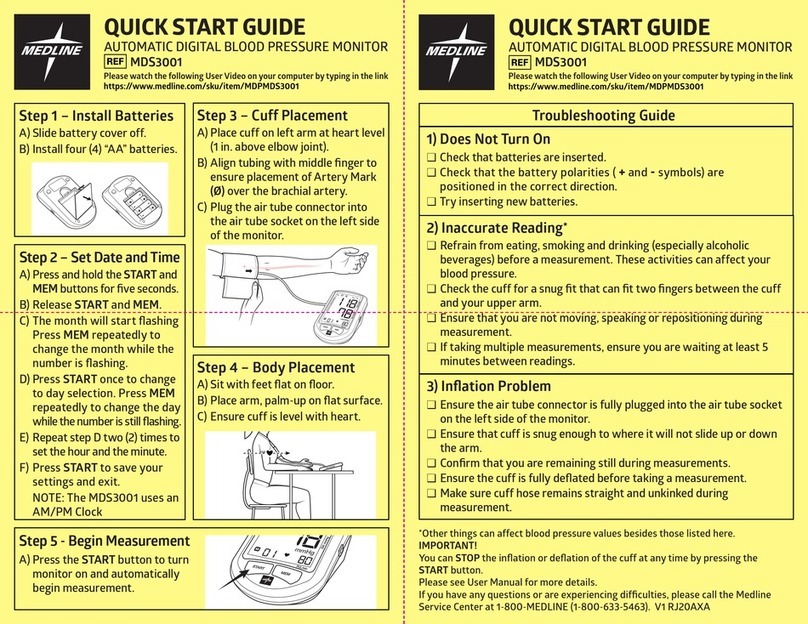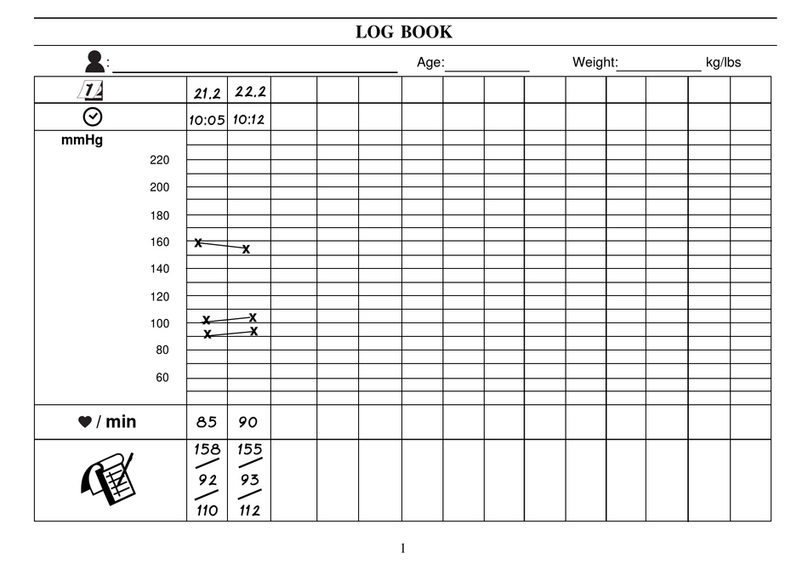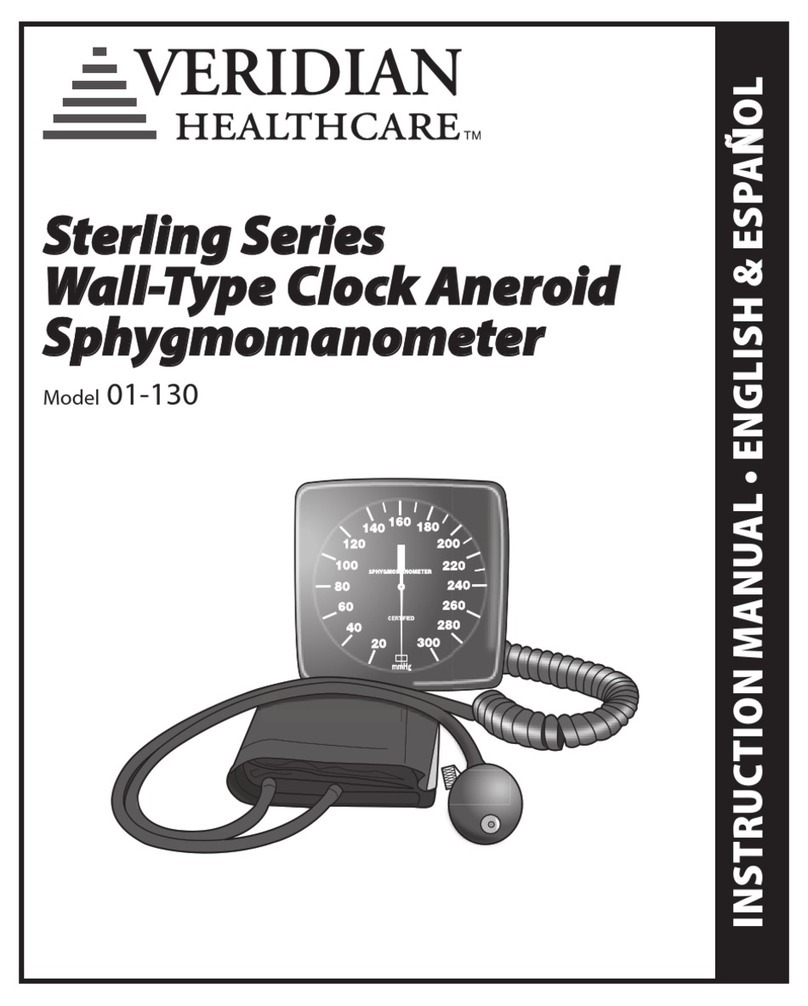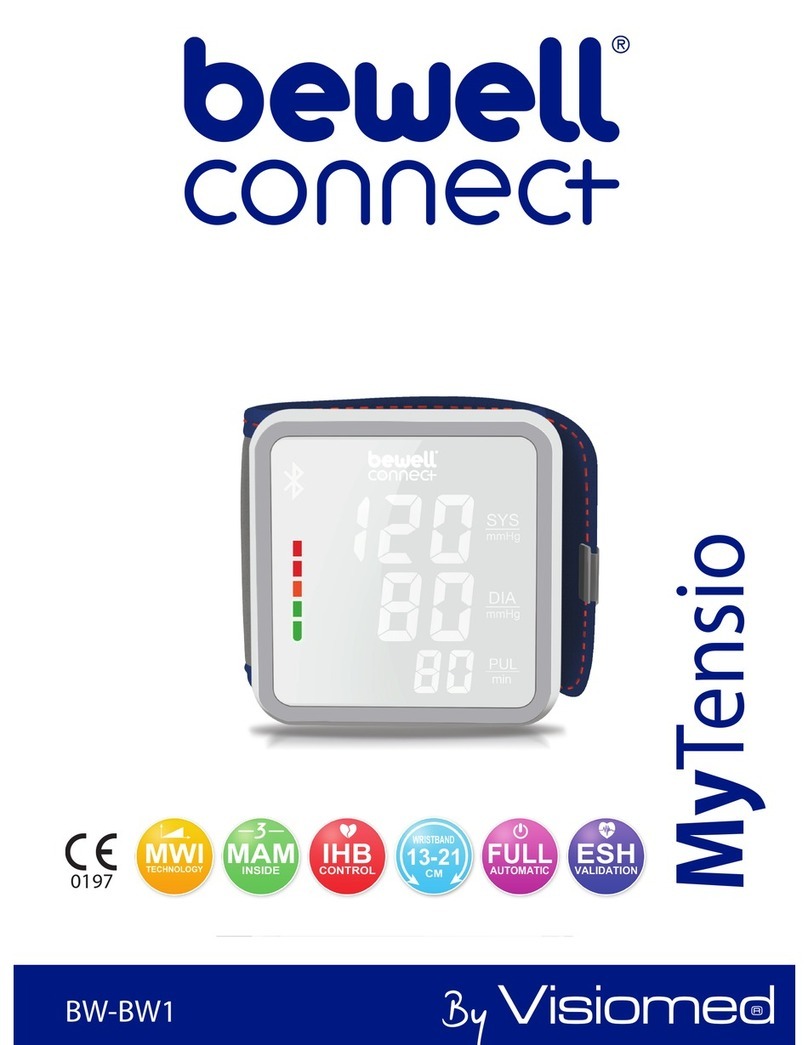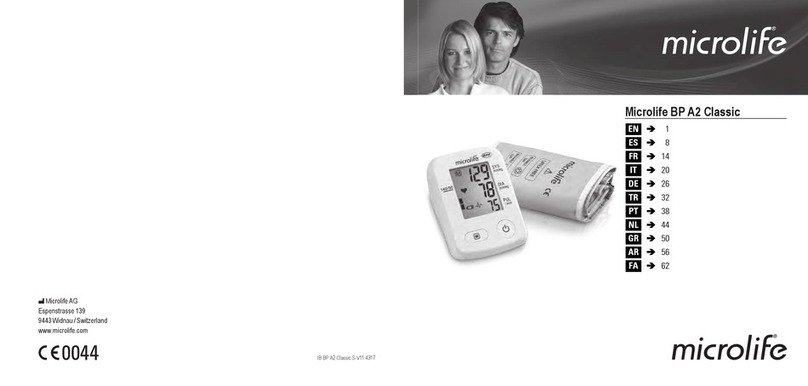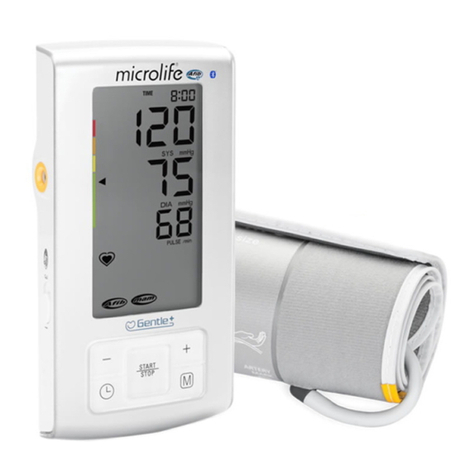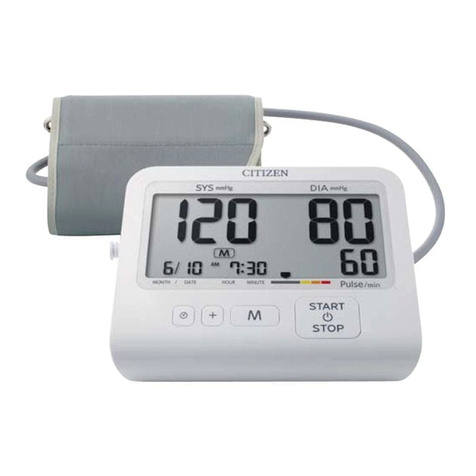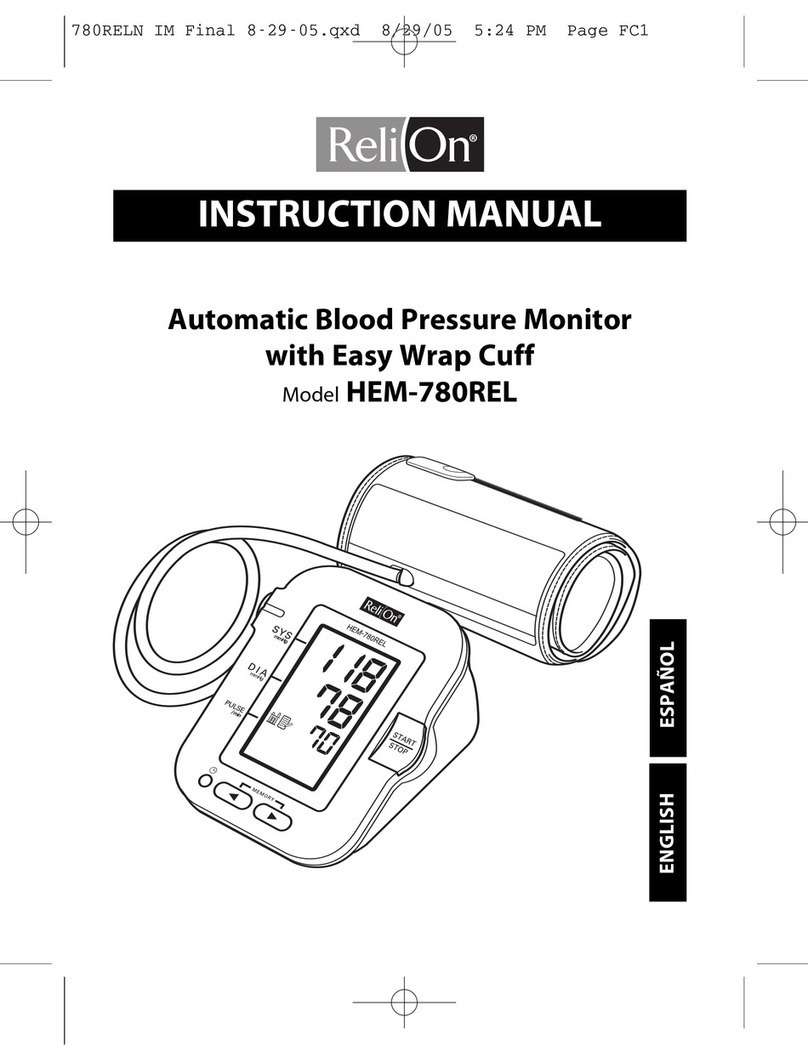4
EN
CARING FOR YOUR BLOOD PRESSURE MONITOR
To ensure you receive the maximum benefit from using this
product, please observe the following care guidelines.
·Whennotinuse,storethe main unit in theprotectiveplastic
container that came with it.
·Donotimmersethemainunitinwater.Ifitcomes in contact
with water, dry it immediately with a soft lint-free cloth.
·Use a soft, slightly moistened cloth to wipe off the main
unit casing and cuff. Do not use abrasive or corrosive
cleaning agents, as these may cause damage.
·Remove the batteries whenever you are planning to store
the main unit for a long period of time.
·When replacing batteries, use new batteries as specified
in this user manual. Do not mix new and old batteries.
·Do not place objects such as stickers on the wrist cuff or
main unit, as these may impair the measurement.
·Do not subject the main unit to excessive force, shock,
dust, temperature changes, or humidity. Such treatment
may result in malfunction, a shorter electronic life span,
damaged batteries, or distorted parts.
·Do not tamper with the internal components. Doing so will
terminate the product warranty and may cause damage.
The main unit contains no user-serviceable parts.
·If you no longer need to use this product, protect the
environment by bringing it to your dealer or designated
collection point for proper disposal.
ABOUT BLOOD PRESSURE
What is blood pressure?
Blood pressure is the force generated by the blood against
the walls of arteries during cardiac contraction and relaxation
(e.g., the pumping action of the heart).
What are systolic pressure and diastolic pressure?
When ventricles contract and pump blood out of the heart,
blood pressure reaches its maximum value. This highest
pressureinthe cycle is known as systolic pressure. When the
heart relaxes between heartbeats, the lowest blood pressure
is diastolic pressure.
What is mean arterial pressure (MAP)?
The mean arterial pressure (MAP) is the average pressure
that forces blood through the arteries. It is not the average of
the systolic and diastolic blood pressure; rather, MAP
corresponds to a state of balance between the compressive
and expansive forces acting on the arterial wall when there is
no distension outward or inward. MAP is an excellent way to
evaluate the stress on the walls of your blood vessels, and
canbeusedtoevaluateexcessiveloadonthecardiovascular
system. Show your MAP history to your doctor to provide
additional information that may help him or her understand
your situation.
Whymeasureyour bloodpressure?
Blood pressure measurement can highly reflect one’s health
condition. High blood pressure is potentially linked to serious
illnessessuchasstroke,heart diseaseandkidneyfailure.Since
there is no symptom most of the time, many hypertensive













